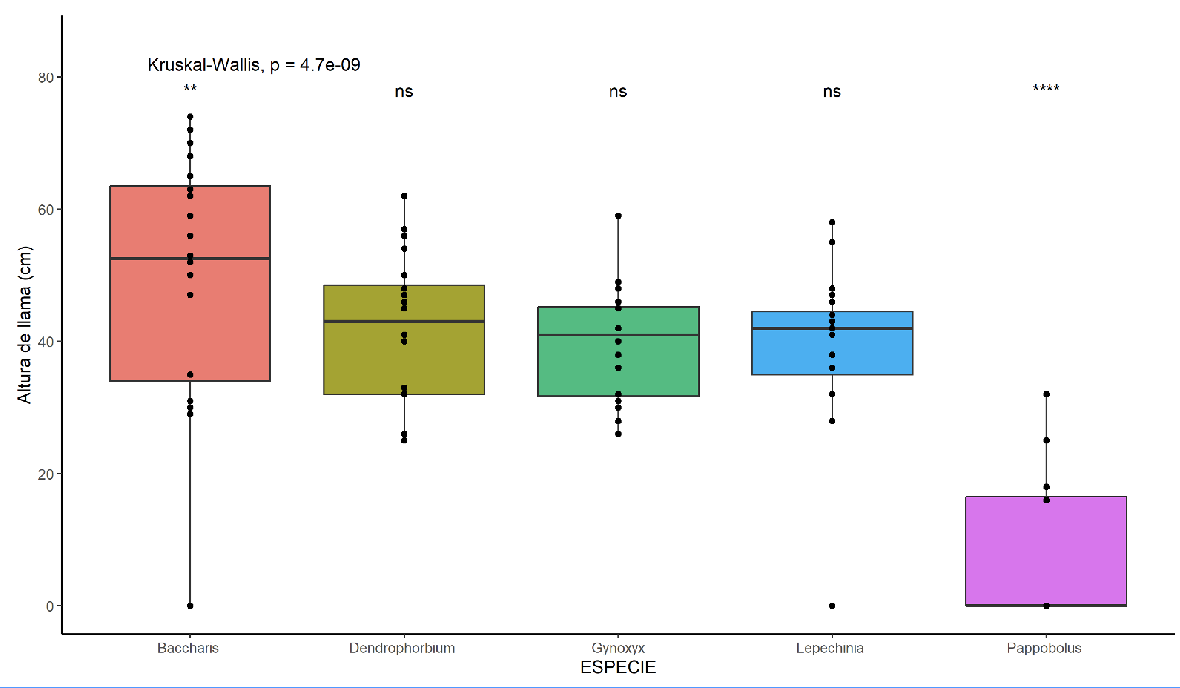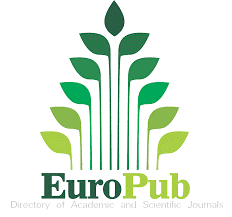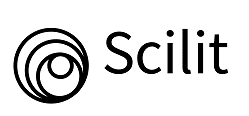Flammability of representative species in a matorral Andean of southern Ecuador
DOI:
https://doi.org/10.54753/blc.v14i1.2071Keywords:
Combustibility, direct flame, forest fires, ignition, sustainabilityAbstract
Knowledge of the flammability of plant species allows us to have an idea of the potential behavior of fire and thereby design mitigation strategies for the control and prevention of forest fires. The objective of the research was to determine the flammability of plant species from the Andean scrubland under laboratory conditions and thus be able to enrich knowledge about the dynamics of fire and its behavior. The study site was the Andean scrub located in the “Francisco Vivar Castro” University Park, from which five representative species were selected, which were Lepechinia mutica, Dendrophorbium scytophyllum, Pappobolus acuminatus, Baccharis latifolia and Gynoxyx nitida. Under laboratory conditions, the direct flame method was used and flammability characteristics such as ignition time, sustainability, combustibility and flame height were evaluated. 20 flammability tests were carried out per species, with a sample weight of five grams. The results of the flammability characteristics of the five species were variable, with ignition times between 6.2 and 14.95 seconds, sustainability between 8.85 and 68.1 seconds, flame heights between 6.35 and 38.4 . centimeters and combustibility between 0.04 and 0.15 g.s-1. The species L. mutica, D. scytophyllum, B. latifolia and G. nitida presented an extremely flammable category and P. acuminatus had a low flammable category. The representative species of the Andean scrub mostly presented extremely flammable categories, which suggests that they are species that can burn and spread fire easily, which makes this ecosystem vulnerable to forest fires.References
Agee, y Skinner, C. (2005). (PDF) Basic principles of forest fuel reduction treatments. https://doi.org/10.1016/j.foreco.2005.01.034
Aguirre, Z., y Yaguana, C. (2014). Parque universitario de educación ambiental y recreación Ing. Francisco Vivar Castro. Universidad Nacional de Loja, Loja, Ecuador. 30 p.
Alzate-Guarín, F., Muñoz, L., y Amell, A. (2022). Evaluación preliminar de la inflamabilidad de algunas especies de plantas cultivadas en Colombia. Hoehnea, 49. https://doi.org/10.1590/2236-8906-49/2021
Arancibia, P. (2021). Inflamabilidad de especies nativas de los bosques chilenos. Universidad técnica Federico Santa Maria. https://noticias.usm.cl/2021/07/28/proyecto-analiza-la-inflamabilidad-de-especies-nativas-de-los-bosques-chilenos/#:~:text=La%20investigaci%C3%B3n%20demostr%C3%B3%20tambi%C3%A9n%20que,especies%20predominantes%20del%20clima%20mediterr%C3%A1neo.
Arellano, L., & Castillo, C. (2014, 25 marzo). Efecto de los incendios forestales no controlados en el ensamble de escarabajos coprófagos (Coleoptera: Scarabaeidae) en un bosque templado del centro de México. www.scielo.org. http://www.scielo.org.mx/scielo.php?script=sci_arttext&pid=S1870-34532014000400015
Baeza, M. J., Raventós Bonvehí, J., Escarré i Esteve, A., y Vallejo, R. (2000). Efecto de la estructura en matorrales de Ulex parviflorus de diferente edad en los tratamientos de roza y quema controlada: Implicaciones en el control del combustible. Cuadernos de la Sociedad Española de Ciencias Forestales, 9, 199-210.
Dehane, B., Hernando, C., Guijarro, M., y Madrigal, J. (2017). Flammability of some companion species in cork oak (Quercus suber L.) forests. Annals of Forest Science, 74(3), Art. 3. https://doi.org/10.1007/s13595-017-0659-5
Duane, A., Brotons, L., Lerner, M., Fernández, M., Vila, B., Chacón-Labella, J., Pescador, D. S., y Lloret, F. (2019). Análisis de escenarios, a corto y medio plazo, del riesgo de afección por incendios forestales para al menos veinticinco tipos de hábitat de bosque y matorral.
FAO, Food and Agriculture Organization (2007). Fire Management- Global assesment 2006. FAO forestry paper No. 151. Rome, Italy.
Guarín, F., Muñoz, L., & Amell, A. (2022). Evaluación preliminar de la inflamabilidad de algunas especies de plantas cultivadas en Colombia. Hoehnea 49. https://www.scielo.br/j/hoehnea/a/FZ5YWpcZW8xTBppSzyFzTfN/?format=pdf&lang=es
Hachmi, M., Sesbou, A., Benjelloun, H., El Handouz, N., y Bouanane, F. (2011). A Simple Technique to Estimate the Flammability Index of Moroccan Forest Fuels. Journal of Combustion, 2011, e263531. https://doi.org/10.1155/2011/263531
Hobbs, R. J., y Gimingham, C. H. (1984). Studies on Fire in Scottish Heathland Communities II. Post-Fire Vegetation Development on JSTOR. https://www.jstor.org/stable/2260069
Kane, J. M., & Prat-Guitart, N. (2018). Fuel Moisture. En S. L. Manzello (Ed.), Encyclopedia of Wildfires and Wildland-Urban Interface (WUI) Fires (pp. 1-13). Springer International Publishing. https://doi.org/10.1007/978-3-319-51727-8_115-1
Lemjallad, L., Chabir, R., Kandri, Y., El Ghadraoui, L., Ouazzani, F. y Errachidi, F. (2019). Improvement of Heliciculture by Three Medicinal Plants Belonging to the Lamiaceae Family. The Scientific World Journal, 2019, 1-7. https://doi.org/10.1155/2019/2630537
Magalhães, R. M. Q., y Schwilk, D. W. (2012). Leaf traits and litter flammability: Evidence for non-additive mixture effects in a temperate forest. Journal ofEcology, 100(5), 1153-1163. https://doi.org/10.1111/j.1365-2745.2012.01987.x
Manrique-Toala, T. O., Ramos-Rodríguez, M. P., Cruz-Rosales, G. E. D. L., Tigua-Pinela, Y. Y., & Pincay-
Muñoz-Chamba, L., Ulloa, E., Muñoz, J., & Aguirre, Z. (2022). Composición y diversidad florística del matorral andino afectado por incendios forestales en el sur del Ecuador. Bosques Latitud Cero, 12(2), Article 2.
Muñoz-Chamba, L., Vele-Yauri, Y., Muñoz, J., & Aguirre, Z. (2023). Inflamabilidad de especies forestales representativas del bosque andino bajo condiciones de laboratorio. Bosques Latitud Cero, 13(2), Article 2.
Ormeño, E., Céspedes, B., Sánchez, I. A., Velasco-García, A., Moreno, J. M., Fernandez, C., y Baldy, V. (2009). The relationship between terpenes and flammability of leaf litter. Forest Ecology and Management, 257(2), 471-482. https://doi.org/10.1016/j.foreco.2008.09.019
Paton, D., Buergelt, P. T., Tedim, F., y McCaffrey, S. (2015). Chapter 1 - Wildfres: International Perspectives on Their Social—Ecological Implications (J. F. Shroder & D. B. T.-W. H. Paton Risks and Disasters (eds.); pp. 1–14). Elsevier. https://doi.org/https://doi.org/10.1016/B978-0-12-410434-1.00001-4
Pausas J.G., Keeley J.E., Schwilk D.W. (2017). Flammability as an ecological and evolutionary driver. Journal of Ecology 105: 289-297.
Peterson, S., Roberts, D., y Dennison, P. (2008). Mapping live fuel moisture with MODIS data: A multiple regression approach. Remote Sensing of Environment, 112(12), 4272-4284. https://doi.org/10.1016/j.rse.2008.07.012
Ramos-Rodríguez, M., Coronel, O. G. P., González, A. J., Cevallos, C. G. C., Zúñiga, M. V. T., & Jalca,O. F. M. (2019). Comportamiento del fuego a escala experimental en una plantación de Tectonagrandis L.f. En Jipijapa, Manabí, Ecuador. Revista Brasileira de Ciências Agrárias, 14(1), 1-9. https://doi.org/10.5039/agraria.v14i1a5607
Rochas, L. (1994). Inflammabilite et indice de siccite de la bruyere arborescente et de l’arbousier. Institut National de La Recherche Agronomique.
Rosales-Solórzano, E.R. (2019). Ecuaciones de niveles de humedad relacionada a la densidad básica de la madera de especies forestales tropicales en Madre de Dios, Perú. Revista Forestal Mesoamericana Kurú, 17(40). https://doi.org/10.18845/rfmk.v17i40.4905
Sandberg, D. V., Ottmar, R. D., & Cushon, G. H. (2001). Characterizing fuels in the 21st century. International Journal of Wildland Fire, 10(3 and 4), 381–387. https://doi:10.1071/WF01036
Sarango-Cobos, J., Muñoz, J., Muñoz, L., y Aguirre, Z. (2019). Impacto ecológico de un incendio forestal en la flora del páramo antrópico del Parque Universitario “Francisco Vivar Castro”, Loja, Ecuador. Bosques Latitud Cero, 9(2), Art. 2

Published
How to Cite
Issue
Section
License
Copyright (c) 2024 Bosques Latitud Cero

This work is licensed under a Creative Commons Attribution-NonCommercial-ShareAlike 4.0 International License.
This work is published under the Creative Commons Attribution-NonCommercial-ShareAlike 4.0 International (CC BY-NC-SA 4.0) license. This means that users may copy, distribute, and adapt the content, provided that proper credit is given to the authors and the journal. Commercial use of the material is not permitted. Additionally, any derivative work must be distributed under the same license. This license ensures open access to knowledge, promoting the dissemination and reuse of published works for non-commercial purposes, respecting authorship, and ensuring the free circulation of content under fair terms.




























